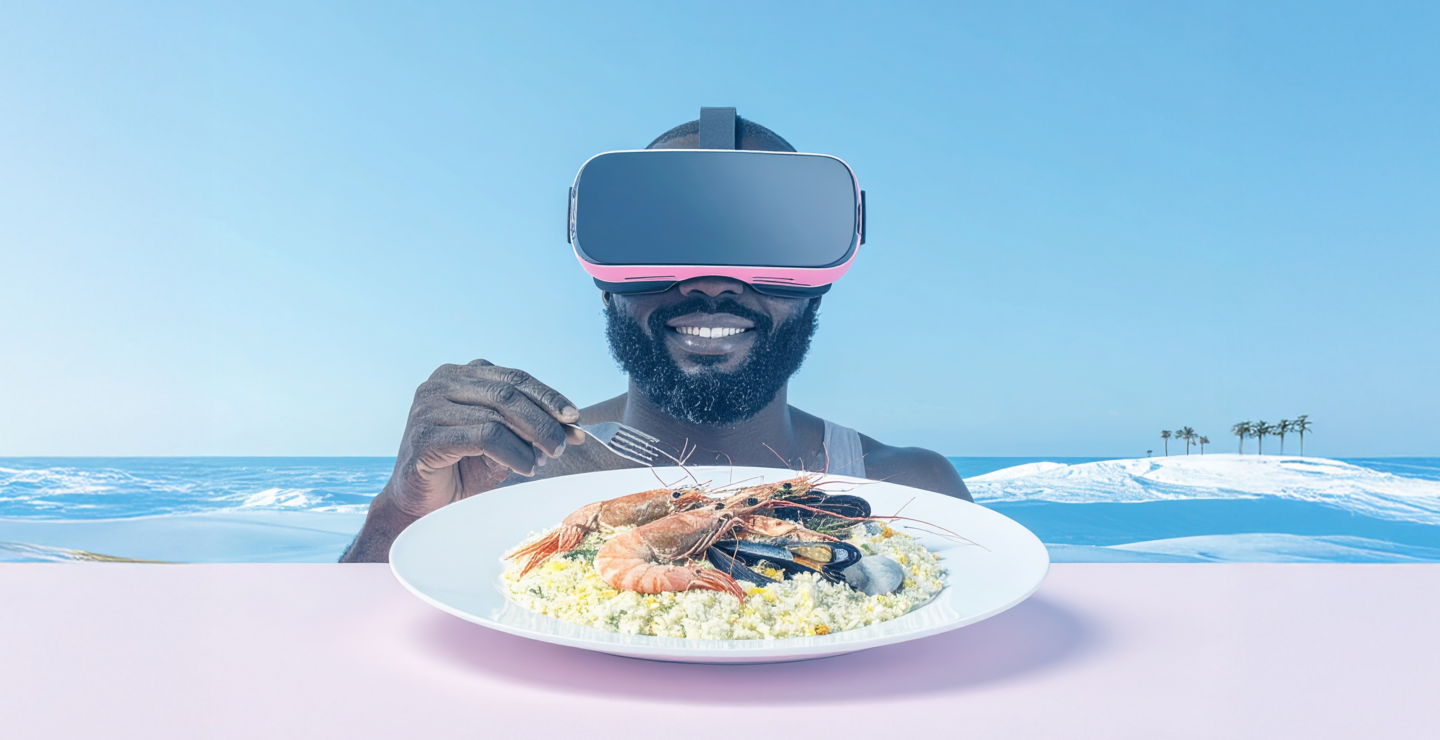The fork was once considered a radical innovation. Now, screens, sensors, and simulations are changing how we eat.

From the first stone tools to today’s AI-powered systems, our ways of eating and experiencing food have always evolved alongside technology. Consider the fork, once dismissed as unnecessary when introduced by a 15th-century Italian princess, faced resistance (British navvies at the end of the 19th Century were still refusing to use it because it was deemed effeminate) before becoming a standard dining utensil, exemplifying the slow and uneven integration of innovations into everyday life.
From AI-generated recipes and robotic chefs to augmented reality dining and algorithmically enhanced flavour pairings, food is currently being reimagined through the lens of computation. What was once a domain of ever so slowly changing tradition and tactile intimacy is increasingly mediated by screens, sensors, and simulation.
Yet this is not merely a story of replacement. Rather, we are witnessing the emergence of a new culinary paradigm, one where digital tools extend human creativity, expand access to high-end techniques, and enable unprecedented forms of multisensory storytelling.
For example, at Kitchen Theory in London, multisensory dinners unfold alongside projected narratives and curated soundscapes. In Japan, care homes use companionship robots paired with mixed reality (the blending of physical and digital environments in real time) to simulate shared meals for the growing elderly population.
The possibilities are striking: extended reality, an umbrella term for technologies that merge or enhance physical and virtual environments (including augmented, virtual, and mixed reality) can turn dinner into theatre, as in the case of Le Petit Chef, where diners watch a miniature animated chef projected onto their plate as he prepares each course in sync with the real dish being served.
Generative AI has already been used to design recipes, such as Dodo Pizza’s Middle Eastern–Indian fusion pie. At the other end of the spectrum, YouTube’s Tasty showed that while a cake based on a recipe generated by ChatGPT could be baked successfully, it still lost out to a human-written recipe in blind taste tests. Meanwhile, although the ambitious promises once associated with 3D food printing, such as fully customisable meals on demand, remain largely unrealised, the underlying potential continues to capture attention.
Edges of the edible future
In niche applications such as personalised nutrition, high-end design, and space travel, its promise still stands: To reshape how we produce, structure, and even imagine food under novel constraints. In space research, for instance, some food futurists are even contemplating 3D-printed food to deliver tailored, mood-sensitive nutrition during long-haul missions. Such examples suggest that the role of digital gastronomy is not to override culinary culture, but to intervene, sometimes playfully, sometimes strategically, at its margins.
Few areas reveal the power of digital technology more clearly than food visuals. What once relied on skilled photographers and stylists is now often achieved through AI tools like DALL·E, Midjourney, or even hyper-edited photos. A small tweak, such as adding digital steam, can make a dish look hotter, fresher, and more appetising, even if it doesn’t exist. These images are no longer just representations of food, they actively shape what people crave and choose to eat. On the one hand, this opens exciting creative and commercial possibilities for brands looking to stand out online; on the other, it risks setting unrealistic expectations and blurring the line between appetite and illusion. As these tools become more advanced, the boundary between showing food and shaping desire is becoming harder to spot.
Navigating the future of digital gastronomy
Still, the path forward demands careful navigation. The inability to digitise flavour, a fundamentally chemical phenomenon arising from the interplay of taste, smell, texture, temperature, and other sensory cues, remains a profound limitation. Added to this are the high energy demands of immersive technologies and mounting concerns about privacy, manipulation, and cultural homogenisation. Diners may marvel at robot bartenders or algorithm-crafted menus, yet often pause when confronted with the absence of a human hand in preparing their meal. For digital gastronomy to flourish, it must rest not only on technical ingenuity but also on cultural sensitivity, environmental responsibility, and a respect for the irreducibly multisensory nature of eating.
For those wishing to explore these shifts further, from flavour modelling and robotic kitchens to immersive storytelling and the ethics of food technology, our new book “Digital dining: New innovations in food and technology” offers a wide-ranging account of how today’s tools are not only transforming what we eat, but reconfiguring how we sense, reflect on, and relate to food itself.
Published 19. August 2025

